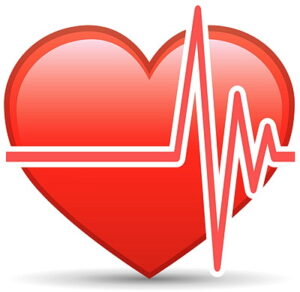What are Cardiovascular Diseases?
The cardiovascular system is made up of the heart, blood vessels, and blood. The heart is responsible for pumping oxygenated blood to the entire body. The blood vessels act as a transporting agent, carrying oxygen and nutrient-rich blood to and from the heart to our other organs. When the organs receive this oxygen-rich blood, they can perform their respective functions.
Cardiovascular diseases are a category of conditions that affect the heart and blood vessels and encompass various conditions, but the most common ones are highlighted below.
Heart Attack
Also known as myocardial infarction, is one of the most common cardiovascular diseases. Every year, around 0.7 million Americans suffer from this debilitating ailment. It is one of the leading causes of death globally and causes one in every four deaths in the US.
The heart muscles need a constant flow of oxygen-rich blood, providing adequate blood supply to the body’s organs. In the case of cardiovascular diseases, the blood vessels are narrowed and consequently result in a higher risk of blood clots. A heart attack occurs when the supply of blood to the heart is suddenly stopped due to these clots and this problem can seriously damage the heart muscle.
Not all heart attacks are due to blood clots, however. A heart attack can be a result of a spasm of blood vessels carrying blood to the heart. During a spasm, the blood vessel is unable to perform its function normally. As a result, the heart is deprived of oxygen-rich blood and the heart muscle suffers permanent damage.
This heart muscle deterioration depends upon the period the heart was deprived of oxygen. The muscle can begin to heal right after a heart attack and full recovery can take up to eight weeks. In case of serious damage, a heart attack can be fatal.
Coronary Artery Disease
Coronary artery disease is a specific medical condition related to the arteries, which are the blood vessels for carrying oxygen-rich blood to the heart. The heart then pumps oxygenated blood to the rest of the body.
Coronary artery disease occurs when the arteries become too narrow, due to a thick lining of fatty deposits. This is caused by a sedentary lifestyle and a diet rich in fats. The fatty deposits, called plaque, exert pressure on the arteries and result in damage to the vessel’s inner layers. This injury causes inflammation within the artery and the plaque further deposits in the artery; subsequently, pressure is exerted on the blood vessel and this may cause it to rupture. It also increases the risk of clot formation.
Congenital Heart Defect
This condition is associated with a defect in the structure of the heart or major blood vessels. A congenital heart defect is one of the most common birth abnormalities. Every year, around 1% of babies in the US are born with congenital heart defects. This birth defect either causes blood to flow through the heart irregularly or it may restrict the flow of blood in the heart or other blood vessels. Previously, children born with congenital heart defects were unable to survive. However, with advances in technology, it is possible to successfully treat some of these birth defects.
There are over 30 different types of congenital heart defects. Medically, these defects can be divided into two categories.
Cyanotic Heart Disease
This condition is often characterized by low oxygen levels. This can cause breathlessness, fatigue, and fainting in infants. There may also be blue skin and lips, as well as fever, nausea, or vomiting.
Acyanotic Heart Disease
The oxygen levels in this condition are normal, but there is a flaw in the structure of the heart. This restricts the heart’s ability to pump blood to all the other parts of the body effectively.
Most of the patients suffering from congenital heart defects have a higher than normal blood pressure. This means that the heart needs to work harder to transport blood throughout the body. This can weaken the heart muscles over time and may lead to heart failure. High blood pressure also increases the risk of other medical conditions, including stroke and kidney failure.
Arrhythmia
Some changes in the heart rate are normal. When a person sleeps, the heart rate drops and increases during exercise or stressful situations. However, an abnormally high or low heart rate can be a sign of a dangerous cardiovascular disease.
Arrhythmia is a cardiovascular disease related to the rhythm of your heartbeat. People suffering from this condition experience irregular cardiac rhythm. There are two common types of arrhythmia. Either the heart beats too slowly. This condition is referred to as bradycardia. Or the heart rate is too high. This is known as tachycardia and occurs when you have more than 100 heartbeats per minute.
Though the condition is not related to blood vessels, it is categorized as cardiovascular disease. This is because it is associated with the heart and the electrical impulses of the heart. The condition is particularly dangerous because if the heart is beating too fast or too slowly, it cannot effectively pump blood to all other organs. Ineffective blood supply to vital organs like the lungs, brain, and other organs can damage them.
We are just scratching the surface here to give you a quick overview of heart ailments, but there is an amazing abundance of heart-related websites on the Internet. Be sure to read up on cardiovascular diseases for more detailed information, but make sure the information you find is from a reliable source.
As far as prevention is concerned, there is no guarantee that you will not acquire a cardiovascular disease sometime in your lifetime and there is also the possibility that you will never have a heart-related issue, but good exercise and proper diets can always reduce the odds. Of course, if you feel that something is wrong, contact your doctor immediately. Don’t wait!

